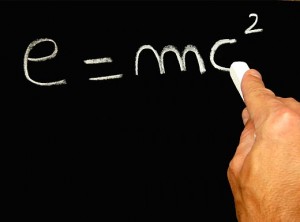“The Intersection” Nutritional Philosophy
 If you were going to build the ultimate human performance and nutrition coach, what ingredients would you need?
If you were going to build the ultimate human performance and nutrition coach, what ingredients would you need?
- Extensive athletic experience?
- Rigorous academic training?
- Years of coaching experience?
A combination of the three would be ideal, wouldn’t it?
Well, I found that combination in Dr. John Berardi, former national level bodybuilder, professor at the University of Texas at Austin, president of Science Link, Inc – Translating Research Into Results, and author of 3 books: Gourmet Nutrition, From Scrawny to Brawny (www.scrawnytobrawny.com), and Rev It Up.
With such an impressive resume, I just had to talk to Dr Berardi about what is arguably the most important part of the performance equation – nutrition.
******************************
CB:
What is your nutritional philosophy/approach to healthy eating?
JB:
My nutritional philosophy can best be described by, what I call, “The Intersection.” Every nutritional program I design is carefully laid out in order to find the intersection of three equally important goals.
Goal #1 – Improved health
Goal #2 – Improved body composition
Goal #3 – Improved performance (athletic performance or improved daily activity)
Why do I make this distinction?
Well, oddly enough, most nutritionists focus on ONE of these goals and design nutrition programs based on that goal – to the exclusion on the others.
Unfortunately, what they (and their hard-working clients) don’t understand is this – it’s possible, dare I say easy, to design a program that meets all three criterion; improving health, improving body composition, and improving performance. But you’ve gotta know how to do it and you’ve gotta be really aware of what you’re trying to accomplish as a nutritionist.
You see, there are some nutrition programs that improve health alone but not athletic performance or body composition. So you’re better on the inside but your outside still suffers.
And there are some nutrition programs that improve body composition alone but sometimes these plans actually cause negative health consequences and a reduction in performance. So you end up looking better but feeling lousy and on the road to health problems.
Finally, there are some programs that improve performance but sometimes these plans can degrade health and body composition. So you can run faster but your body doesn’t look better nor are you healthier.
So, in the end, it should be obvious that any good nutritionist will consider the three most important goals – improving health, improving body composition, and improving performance – and design programs that find the intersection of the three.
So it’s only in the careful use of “The Intersection” that the best nutritional plans are made.
CB:
Ok, so how does one find the intersection?
JB:
Well, finding the intersection is both simple and complex – all at the same time. As I’ve said in one of my previous articles: “while the study of nutrition and training is complex, the actual practice of it should be simple.”
In other words, to find the intersection is a nutritionist’s job.
Finding the intersection requires intricate, detailed, research-based plans delving into every facet of personal nutrition including protein needs, nutrient timing, meal combinations, the metabolic actions of insulin, the interaction between exercise and metabolism, free radicals and antioxidant intake, and acid base balance.
However, beyond all these big words, it’s also the job of the nutritionist to take all these things into account and then translate that science into SIMPLE, EASY TO FOLLOW strategies.
That’s why my company tag line is “Translating Research Into Results.” If your nutritionist doesn’t make it easy for you and spends too much time talking about complex physiology, find another.
Now, when I talk about the simple/complex dichotomy, most people see this as a contradiction. But it’s not a contradiction at all. Rather, sometimes, the complex can be described by the simple — as long as the simple is put together in an elegant way.
Think of mathe matical proofs. The best mathematicians take very complex ideas, formulae and equations and distill them into simple, elegant proofs. In fact, the simpler the proof appears, the more bonus points they get from colleagues.
matical proofs. The best mathematicians take very complex ideas, formulae and equations and distill them into simple, elegant proofs. In fact, the simpler the proof appears, the more bonus points they get from colleagues.
Case in point, perhaps the most famous equation ever describes Einstein’s theory of relativity. How much simpler can an equation appear: E=mc2? But think of the worlds of information that little equation contains.
CB:
So if someone really wants to master their health, body composition, and performance, their best advice is to find a nutrition coach who understands how to take into account all the complex factors that contribute to each AND who can translate all this complexity into simple, easy to follow habits?
JB:
That’s right.
The best training and nutrition experts take worlds of research and experience and distill this huge body of information into simple, easy to follow systems.
In our book, Gourmet Nutrition, Dr John Williams and I do a good job of distilling thousands of research studies into 10 simple “habits” that people can follow to find their own personal “intersection.”
So don’t get fooled by “experts” who turn their explanations into labyrinths of complexity. Either they don’t really know what the heck they’re talking about or they simply don’t know how to communicate well. Elegant and simple advice is always the way to go. As long as “simple” doesn’t mean “simplistic.”
CB:
So what are these 10 habits? 
JB:
Rather than retype them here, Craig, I’d like to provide your readers with a link to the introductory chapter from our Gourmet Nutrition book. By clicking on this link, readers will get to read the intro chapter of the book (starting on page 10 of the preview), in which the 10 habits are outlined.
http://www.johnberardi.com/products/gourmet/gnsample.pdf
CB:
That’s awesome, JB. Thanks! I encourage every reader to download this preview, save it to their computer, and read it once they’re done with this interview.
Okay, so let’s keep this interview going…in part 2 JB gives us his top 20 superfoods essential to any diet and then discusses bodytypes and how you can take advantage of yours to lose weight.